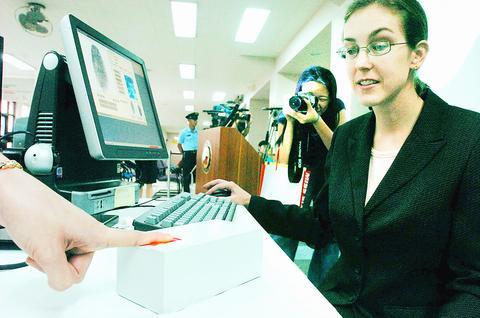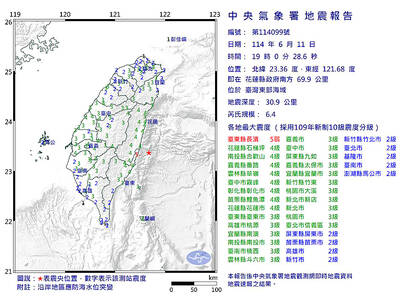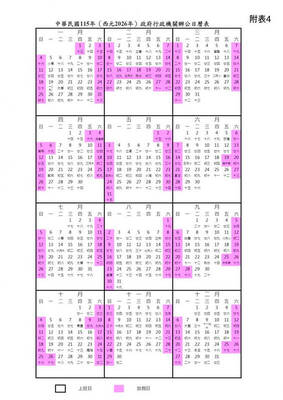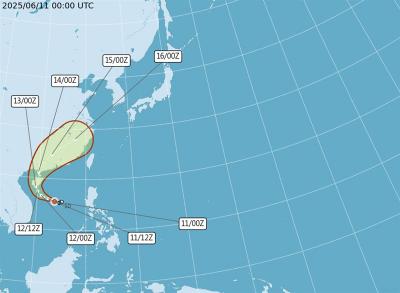The American Institute in Taiwan (AIT) announced yesterday it will begin to electronically fingerprint all US visa applicants next week. Fingerprinting for immigrant visas will begin on Monday, and the procedure will start including non-immigrant visa applicants on Wednesday.
Under the new system, a visa applicant will have both of his or her index fingers scanned in an inkless, electronic process at the beginning of the visa interview. Collecting the fingerprints adds no more than one minute to the application process and in most cases will take only seconds, AIT said.

PHOTO: CHIANG YING-YING, TAIPEI TIMES
"The US continues to welcome visitors, students and business people to the US," Charles Bennett, chief of the AIT Consular Section, said at a press conference introducing the new visa system. "However, we also realize that we must always look to make travel documents as secure as possible to ensure the safety of the US and visitors to the US."
US law (Section 303 of the Enhanced Border Security and Visa Entry Reform Act of 2002, or the Border Security Act) requires all US visa issuing offices, including AIT, to collect biometric identifiers from all visa applicants, Bennett said.
As of Oct. 26, any foreign national applying for a US visa who is between the ages of 14 and 80 will be required to have fingerprints taken as part of the visa application process.
AIT noted it is one of the last US visa-issuing offices in the world to implement these procedures. The US began electronic fingerprinting of visa applicants in September last year at the US embassies in Brussels, Guatemala City and San Salvador, and at the US Consulate General in Frankfurt.
The requirement for all visa applicants to have an electronic fingerprint taken will complement the US-VISIT program, which requires all visa holders have a fingerprint scan and digital photo taken when they enter the US.
"Fingerprints collected during the visa application process can thus be compared to fingerprints collected at the port of entry, to ensure the person to whom a visa was issued is the same person who is seeking entry into the US," Bennett said.
He said visas that are issued before Wednesday and still valid can be used without the need for fingerprinting.
There are procedures to handle cases where an applicant may not be able to provide fingerprints -- for example, if they are missing fingers or their fingerprints cannot be read properly.
AIT said if an applicant is missing fingers, it will start with the index fingers and then use the other fingers -- but that those with temporary problems may face delays.
"We are required to use the index fingers for prints first," AIT explained. "If an applicant has a condition on the index finger that would affect our ability to capture a print [for example, a blister or cut] the applicant will be asked to return once their index finger has healed."
Bennett said that the AIT can waive the fingerprint requirement for those urgent cases that involve medical emergencies.
When asked about concerns over the confidentiality of visa records, including fingerprints, Bennett said that only authorized officials will have access to the information, and only for official business on a need-to-know basis.
"Visa records are, by law, confidential," he said. "Requests for access to visa records by US law enforcement agencies are controlled by statutory, regulatory and other legal restrictions."
Bennett added that Taiwan officials assigned to Taipei Economic and Cultural Representative Office locations in the US are exempt from fingerprinting, as are certain senior Taiwan officials traveling to the US.
He characterized the fingerprinting of David Lee (李大維), Taiwan's new representative to Washington, upon his arrival in the US in July "a mistake" and said US authorities have apologized to him.
At AIT, all other visa application procedures, including fees, will remain the same as before. The appearance of the US visa the applicant receives in his or her passport will be identical. "The applicant's fingerprints will not appear on the visa itself," Bennett said.

A magnitude 6.4 earthquake struck off the coast of Hualien County in eastern Taiwan at 7pm yesterday, the Central Weather Administration (CWA) said. The epicenter of the temblor was at sea, about 69.9km south of Hualien County Hall, at a depth of 30.9km, it said. There were no immediate reports of damage resulting from the quake. The earthquake’s intensity, which gauges the actual effect of a temblor, was highest in Taitung County’s Changbin Township (長濱), where it measured 5 on Taiwan’s seven-tier intensity scale. The quake also measured an intensity of 4 in Hualien, Nantou, Chiayi, Yunlin, Changhua and Miaoli counties, as well as

Taiwan is to have nine extended holidays next year, led by a nine-day Lunar New Year break, the Cabinet announced yesterday. The nine-day Lunar New Year holiday next year matches the length of this year’s holiday, which featured six extended holidays. The increase in extended holidays is due to the Act on the Implementation of Commemorative and Festival Holidays (紀念日及節日實施條例), which was passed early last month with support from the opposition Chinese Nationalist Party (KMT) and Taiwan People’s Party. Under the new act, the day before Lunar New Year’s Eve is also a national holiday, and Labor Day would no longer be limited

COMMITMENTS: The company had a relatively low renewable ratio at 56 percent and did not have any goal to achieve 100 percent renewable energy, the report said Pegatron Corp ranked the lowest among five major final assembly suppliers in progressing toward Apple Inc’s commitment to be 100 percent carbon neutral by 2030, a Greenpeace East Asia report said yesterday. While Apple has set the goal of using 100 percent renewable energy across its entire business, supply chain and product lifecycle by 2030, carbon emissions from electronics manufacturing are rising globally due to increased energy consumption, it said. Given that carbon emissions from its supply chain accounted for more than half of its total emissions last year, Greenpeace East Asia evaluated the green transition performance of Apple’s five largest final

The first tropical storm of the year in the western North Pacific, Wutip (蝴蝶), has formed over the South China Sea and is expected to move toward Hainan Island off southern China, the Central Weather Administration (CWA) said today. The agency said a tropical depression over waters near the Paracel and Zhongsha islands strengthened into a tropical storm this morning. The storm had maximum sustained winds near its center of 64.8kph, with peak gusts reaching 90kph, it said. Winds at Beaufort scale level 7 — ranging from 50kph to 61.5kph — extended up to 80km from the center, it added. Forecaster Kuan Hsin-ping